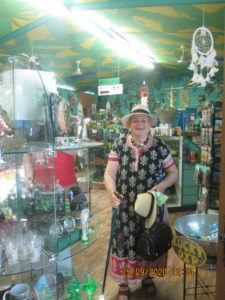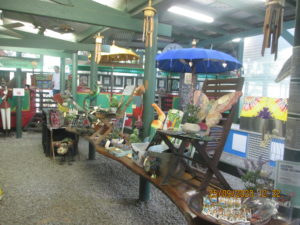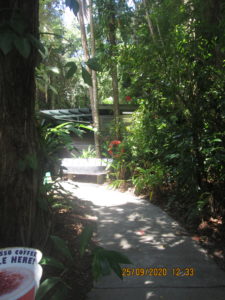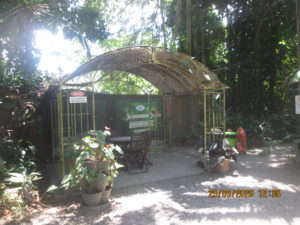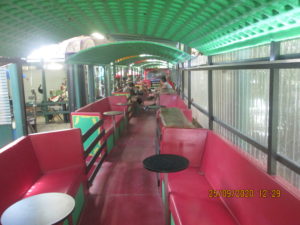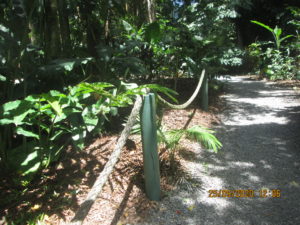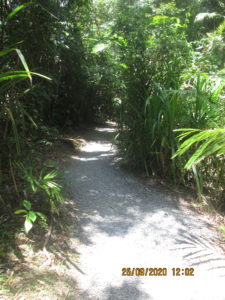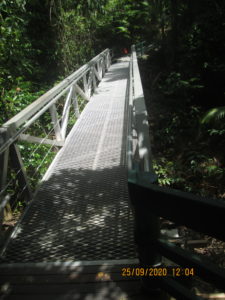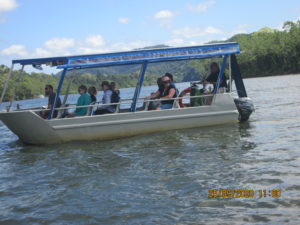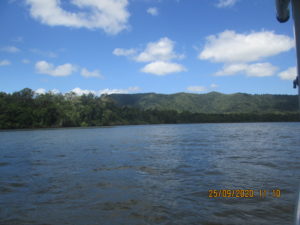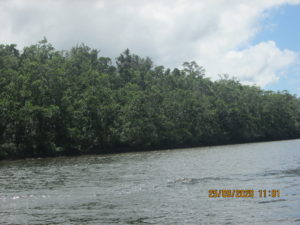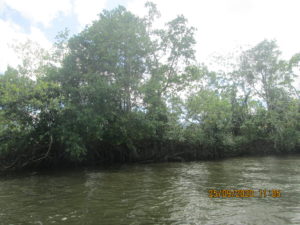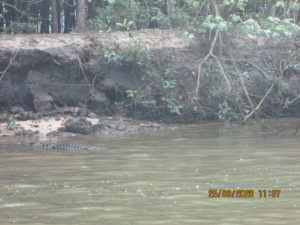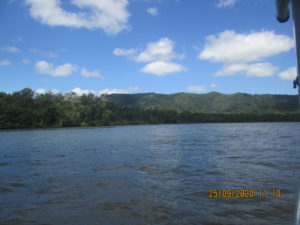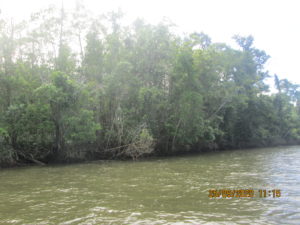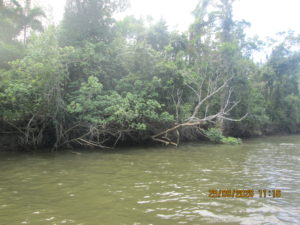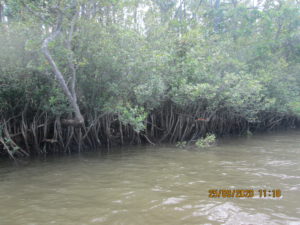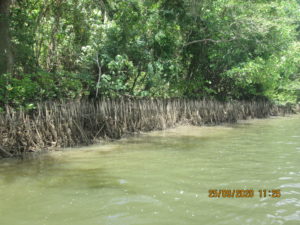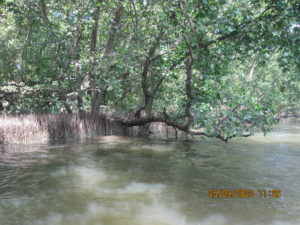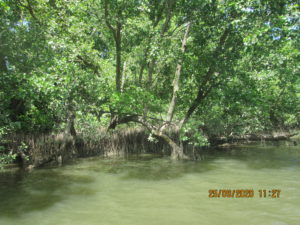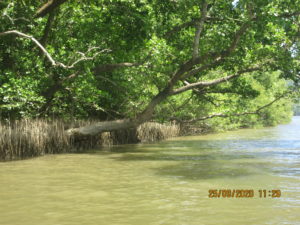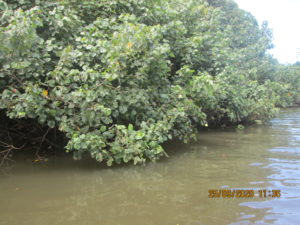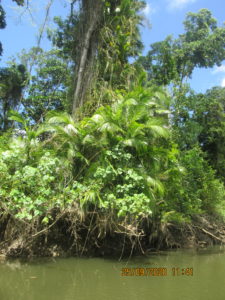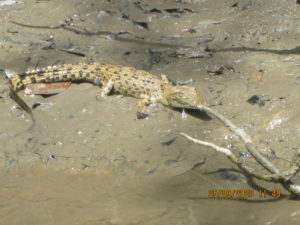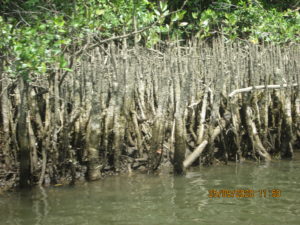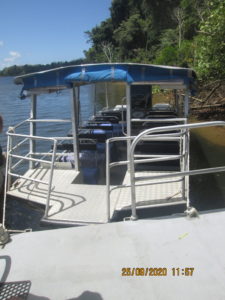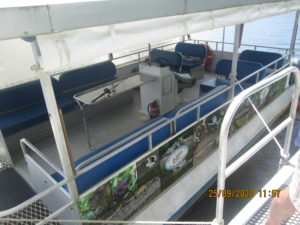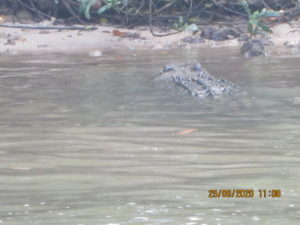
Course and features
The river rises on the slopes of the Great Dividing Range within the Daintree National Park below Black Mountain at an elevation of 1,270 metres (4,170 ft) AHD . The river flows in highly meandering course generally north, then east, then south and then east, through the rainforest where the water is fresh. At this convergence point, an abundance of wildlife congregate, particularly fish. The river is joined by two minor tributaries before flowing through the Cairns Marine Park through thick mangrove swamps where the water is highly saline; and then empties into the Coral Sea, north of Wonga Beach. The mouth of the Daintree River opens onto a giant sandbar that shifts with each changing tide. The river descends 1,270 metres (4,170 ft) over its 127-kilometre (79 mi) course.[2]
The catchment area of the river occupies an 2,107 square kilometres (814 sq mi) of which an area of 33 square kilometres (13 sq mi) is composed of estuarine wetlands.[3]
______________________________________________________________________________________________________________________________________
The Initial Shop Before You Go Down To The Waiting Boat.______________________________________________________________________ See the website: Bruce Belcher’s Daintree River CruisesEspecially see all the many gallery photos ….. Awesome! |
|
|---|---|
| Daintree National Park; Cairns Marine Park | |

